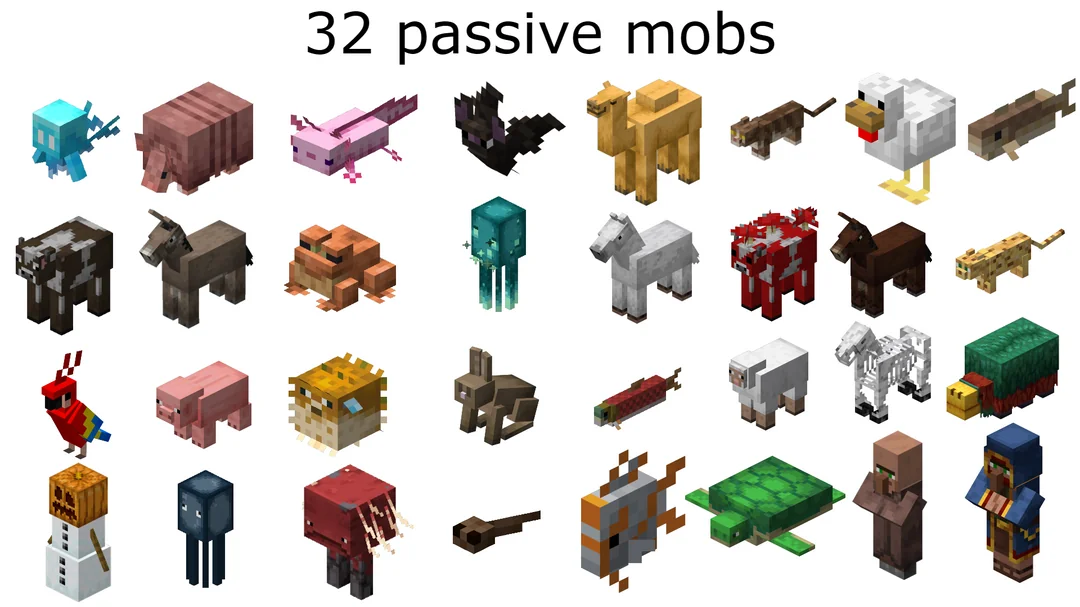Minecraft’s ever-evolving world is teeming with creatures, from friendly animals to menacing monsters. Whether building a cozy farm or battling foes, understanding the game’s mobs is key to thriving in survival mode. This guide dives into the full roster of Minecraft mobs, detailing their behaviors, habitats, and uses, perfect for gamers looking to master their world.
Passive Mobs: Allies in Your Adventure
Allay: The Helpful Fairy
Introduced in The Wild Update, the Allay is a charming blue creature found trapped in cages at Pillager Outposts or Woodland Mansions. Freeing one earns its loyalty, and handing it an item prompts it to fetch more of the same, delivering them to the player’s base. It’s immune to accidental damage from its owner but vulnerable to other mobs, regenerating health if injured. To duplicate an Allay, offer it an amethyst shard while it dances to a jukebox’s tune—no partner required.
Armadillo: The Scute Supplier
Added in April 2024 after a mob vote, armadillos roam Savanna and Badlands biomes in small groups. Sneak to approach them, as quick movements make them curl up in fear. They scare off spiders, making them great base guardians. While untamable, armadillos can be bred with spider eyes and drop scutes, which craft into wolf armor (six scutes per set).
Axolotl: Colorful Cave Dwellers
Found in Lush Caves beneath jungle biomes, axolotls spawn near clay blocks in water at least two blocks deep. They come in leucistic, wild, gold, cyan, and rare blue variants, the latter only obtainable through breeding with tropical fish buckets. Axolotls attack most aquatic mobs except frogs, turtles, dolphins, and each other. Capture them in buckets to create vibrant aquariums at your base.
Bats: Cave Companions
Bats flutter in dark caves below layer 63, hanging upside down when idle. They flee when approached or if their perch is broken, offering no items or experience upon death. While they can’t be tamed or bred, their presence adds spooky ambiance to underground adventures.
Bees: Honey Makers
Bees, vital for honey production, dwell in flower-filled biomes. They remain peaceful unless provoked or their hives are disturbed, dying after stinging. A campfire calms them during honey harvesting. Check My Lead Games’ bee guide for more tips on managing these buzzing allies.
Camels: Desert Mounts
Rare camels spawn in deserts and desert villages, rideable by up to two players. They’re saddled for dashes across the sands, safe from most hostile mobs due to their height. Feed them cacti to breed, and store saddles in their extra inventory slot. Their rarity makes breeding a smart move.
Cats: Creeper Deterrents
Cats, found in villages or swamp huts, scare off Creepers and Phantoms. Tame them with raw cod or salmon, and they may bring morning gifts if left to roam. My Lead Games offers a detailed cat guide for maximizing their utility.
Chickens: Egg-Laying Staples
Chickens cluck across most overworld biomes, dropping feathers, raw chicken, and eggs, which can spawn new chicks when thrown. Use seeds to tame and breed them. Their fall-damage immunity makes them easy to farm in any biome.
Cod: Ocean Dwellers
Cod swim in cold and lukewarm oceans, dropping raw cod when killed, useful for taming cats or cooking. Catch them with a fishing rod or bucket for aquariums. They can’t be tamed or bred but add life to underwater builds.
Cows: Resource Providers
Cows, with biome-specific variants, yield beef, leather, and infinite milk, which counters status effects like poison. Tame and breed them with wheat, making them a cornerstone for early-game survival.
Dolphins: Treasure Guides
Dolphins in non-frozen oceans grant the Dolphin’s Grace effect, boosting swim speed. Feed them raw cod or salmon to lead you to buried treasure or ocean ruins. They can’t be tamed but can be guided into underwater enclosures for base decoration.
Donkeys: Pack Animals
Donkeys, spawning in plains and savannas, are tamed by repeated mounting and can carry chests with 15 inventory slots. Breed them with golden apples or carrots. Crossing a donkey with a horse produces a mule.
Foxes: Sneaky Scavengers
Foxes in taiga biomes flee unless approached stealthily. They carry items in their mouths and hunt small mobs at night. Breed them with sweet berries, and their offspring trust players, making them loyal companions.
Frogs: Slimeball Suppliers
Frogs inhabit swamp and mangrove swamp biomes, eating slimes and magma cubes to drop slimeballs or froglights. Breed them with slimeballs to produce frogspawn, which hatches into tadpoles that grow into frogs.
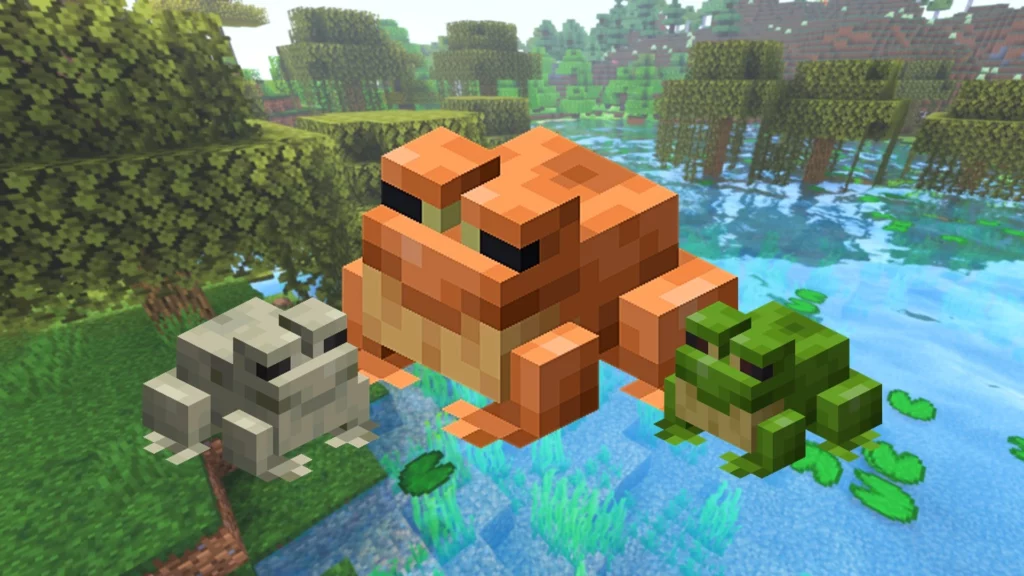
Goats: Cliff Leapers
Goats scale mountain biomes, jumping up to ten blocks high. They may drop a goat horn when ramming blocks, and can be bred with wheat. Their aggressive “screaming” variant charges harder.
Glow Squids: Illuminated Swimmers
Glow squids spawn in dark underwater areas, dropping glow ink sacs for crafting glowing signs and item frames. They’re passive, don’t flee, and add a radiant touch to aquatic builds.
Happy Ghasts: Nether Transports
Unlike their hostile counterparts, Happy Ghasts in the Nether are rideable and carry items in a hot air balloon-like setup. Up to four players can ride one, aiding high-altitude construction. See My Lead Games’ Happy Ghast guide for more.
Horses: Swift Steeds
Horses in plains and savannas vary in color and stats. Tame them by mounting repeatedly, equip them with armor, and breed with golden apples or carrots. Their offspring inherit parental traits, and breeding with donkeys creates mules.
Iron Golems: Village Guardians
Iron Golems protect villages or can be crafted with four iron blocks and a pumpkin. They drop iron ingots and sometimes flowers, making them stalwart defenders during raids.
Llamas: Caravan Leaders
Llamas in mountains and savannas carry chests and form caravans when tamed by repeated mounting. Breed them with hay bales, and they’ll spit at threats, inheriting parental traits.
Mooshrooms: Mushroom Cows
Exclusive to mushroom islands, Mooshrooms yield mushroom stew when milked and can be bred with wheat. Lightning may transform them into regular cows, making them a rare but valuable food source.
Mules: Hybrid Haulers
Mules, born from horse-donkey breeding, carry chests and are automatically tamed upon birth. They’re faster than donkeys but can’t breed, requiring more horse-donkey pairings.
Ocelots: Jungle Sprinters
Ocelots in jungles gain trust with raw cod or salmon, scaring Creepers and Phantoms. Breed them to produce swift kittens, though they remain untamable.
Pandas: Bamboo Lovers
Pandas in bamboo jungles have unique personalities (normal, lazy, playful, etc.) and can be tamed or bred with bamboo. Their babies may inherit traits or spawn via sneezing.
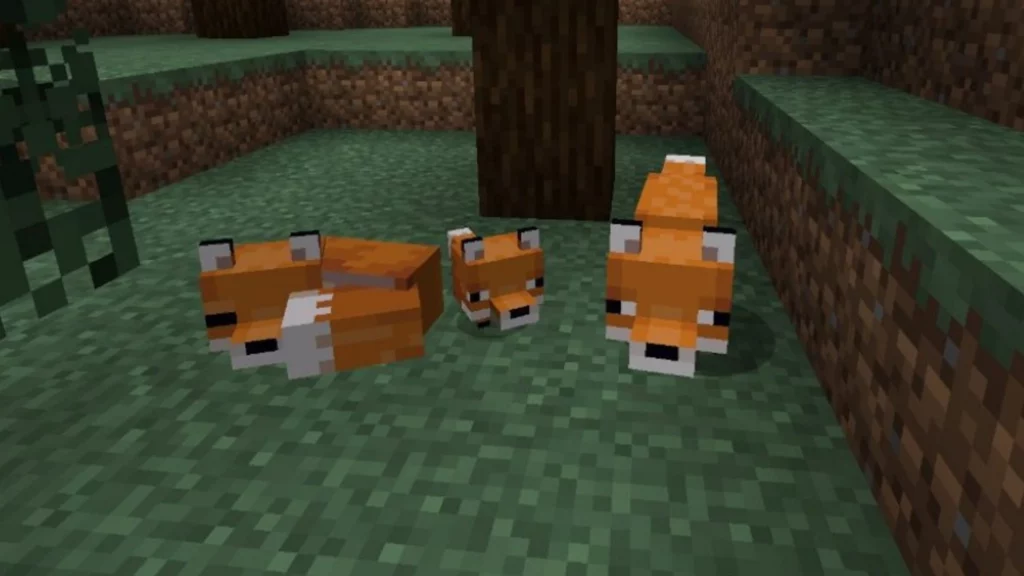
Parrots: Dancing Companions
Parrots in jungles dance to jukebox music and mimic nearby mob sounds, serving as threat detectors. Tame and breed them with seeds, and they’ll perch on your shoulder.
Pigs: Rideable Resources
Pigs in most biomes drop porkchops and can be saddled for riding, controlled with a carrot on a stick. Tame and breed them with carrots or potatoes for reliable food farming.
Polar Bears: Snowy Protectors
Polar bears in snowy biomes turn hostile if their cubs are threatened, dropping raw cod or salmon. They can’t be tamed or bred, so avoid provoking them.
Pufferfish: Spiky Defenders
Pufferfish in warm oceans inflate when approached, dealing poison damage. They drop raw pufferfish for potions or aquariums but can’t be tamed or bred.
Rabbits: Hopping Harvesters
Rabbits in flower forests and taigas drop rabbit meat, hides, and rare feet for potions. Breed them with carrots or dandelions for adorable offspring.
Salmon: River Runners
Salmon in rivers and oceans drop raw salmon for cooking or taming cats. Catch them in buckets for aquariums, but they can’t be tamed or bred.
Sheep: Wool Providers
Sheep in various biomes yield wool for beds and can be dyed for colorful crafting. Breed them with wheat, and their lambs inherit parental colors.
Sniffers: Ancient Seed Finders
Sniffers hatch from eggs found in warm ocean ruins’ suspicious sand. They sniff out torchflower seeds or pitcher pods every eight minutes, requiring torchflower seeds to breed.
Squids: Inky Swimmers
Squids in rivers and oceans drop ink sacs for dye or books. They flee with an ink squirt when approached and can’t be tamed or bred.
Striders: Lava Walkers
Striders in the Nether’s lava lakes are rideable with saddles and warped fungus on a stick. Breed them with warped fungus, but keep them warm to prevent shivering.
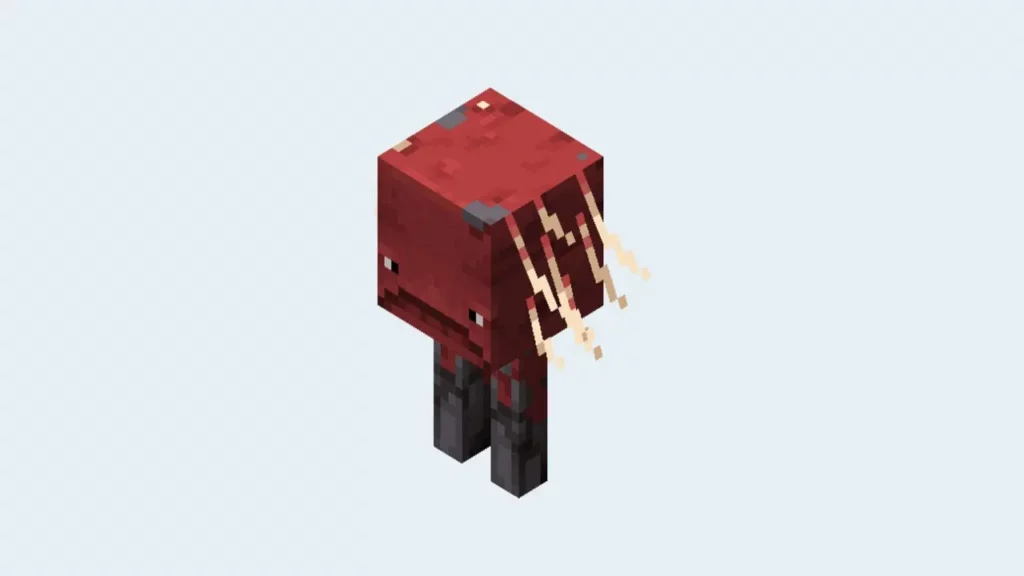
Tropical Fish: Vibrant Swimmers
With nearly 3,000 variants, tropical fish in warm oceans add flair to aquariums. They drop raw fish for taming axolotls but have low nutritional value.
Turtles: Beach Nesters
Turtles on warm beaches lay eggs after breeding with seagrass. Protect these eggs from trampling, as they hatch into slow-moving babies for your coastal base.
Villagers: Trading Partners
Villagers in villages trade goods based on their professions, leveling up with trades. Breed them with bread, carrots, or beetroot, ensuring enough beds are available.
Wandering Traders: Roaming Merchants
Wandering Traders, accompanied by llamas, offer random goods for emeralds. They can’t be bred, and attacking them prompts retaliation from both trader and llamas.
Wolves: Loyal Companions
Wolves in forests and taigas are tamed with bones, defending players and attacking mobs. Breed them with bones, and feed them meat to heal, with tail position indicating health.
Hostile Mobs: Nighttime Terrors
Blaze: Fiery Nether Foes
Blazes in Nether fortresses shoot fireballs and drop Blaze Rods, essential for End progression. Snowballs or powder snow counter their fire immunity.
Bogged: Poisonous Archers
Bogged in swamps or Trial Chambers fire poison arrows, dropping bones, arrows, or bows. Their slow reload and low health make them manageable threats.
Breeze: Windy Warriors
Found in Trial Chambers, Breezes fire wind charges and drop Breeze Rods for crafting. Immune to projectiles, they deflect arrows back at players.
Creaking: Eerie Stalkers
Creakings in Pale Garden biomes spawn from Creaking Hearts at night. Destroy the heart to defeat them, as they’re immune to most damage when active.
Creeper: Explosive Sneaks
Creepers silently explode when near, with charged variants causing greater destruction. They drop gunpowder and, rarely, mob heads when killed by charged explosions.
Drowned: Aquatic Zombies
Drowned in oceans and rivers wield tridents or melee attacks, dropping copper or tridents. They can form from drowned Zombies, ideal for copper farms.
Ender Dragon: The End’s Guardian
The Ender Dragon in The End drops 12,000 XP and a Dragon Egg. Its breath pools damage players, collectible with glass bottles for potions.
Enderman: Teleporting Terrors
Endermen attack if stared at, dropping Ender Pearls. Water or ranged attacks deter them, as they teleport to avoid projectiles.
Endermite: Tiny Troublemakers
Endermites spawn from Ender Pearls, attracting hostile Endermen. They despawn quickly unless named, dropping only experience.
Evoker: Spell-Casting Illagers
Evokers in woodland mansions or raids summon fangs or Vexes, dropping Totems of Undying. They may change sheep colors for unknown reasons.
Ghast: Nether Fireball Launchers
Ghasts in the Nether fire explosive fireballs, dropping tears and gunpowder. Their own attacks can kill them if deflected.
Guardian: Ocean Sentinels
Guardians in ocean monuments fire lasers, dropping prismarine shards or cod. Invisibility potions prevent their attacks.
Hoglin: Nether Herds
Hoglins in Crimson Forests drop pork and leather, repelled by warped fungi or gold armor. They transform into Zoglins outside the Nether.
Husk: Desert Zombies
Husks in deserts inflict hunger and don’t burn in sunlight, dropping rotten flesh or rare items. They target turtle eggs.
Magma Cube: Fiery Jumpers
Magma Cubes in the Nether split into smaller cubes when killed, dropping Magma Cream. Their high-damage jumps make them deadly.
Phantom: Sleepless Nightmares
Phantoms spawn after three sleepless nights, diving to bite and dropping membranes. Cats deter them, and they burn at sunrise.
Piglin: Gold-Obsessed Warriors
Piglins in the Nether barter for gold but attack without gold armor. Piglin Brutes ignore bartering, wielding axes.
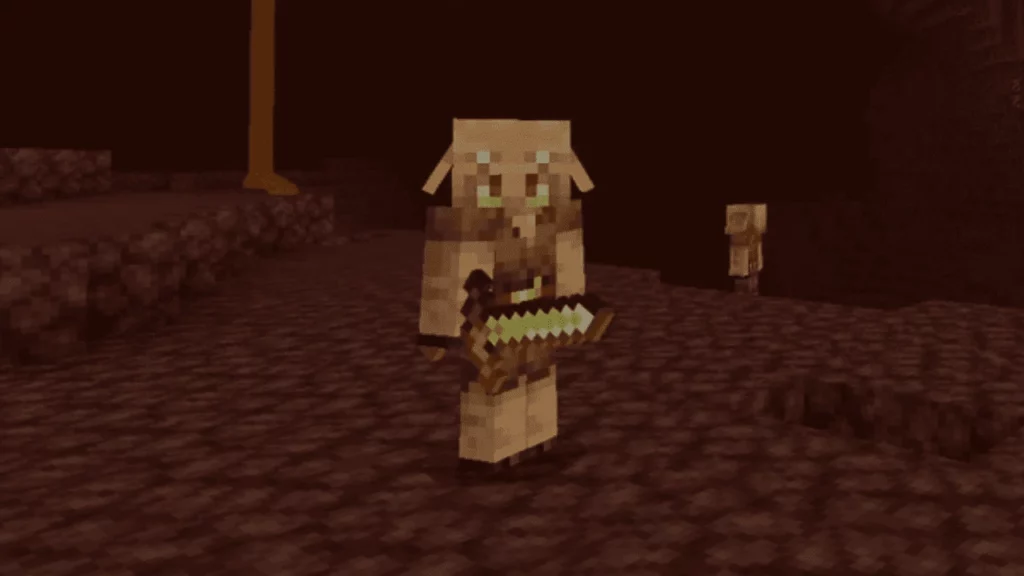
Pillager: Crossbow Raiders
Pillagers in patrols or outposts fire arrows, dropping crossbows or ominous items. Their Bad Omen effect triggers village raids.
Ravager: Raid Behemoths
Ravagers in raids charge and roar, dropping saddles and high experience. Shields block their charges, briefly stunning them.
Shulker: Levitating Boxes
Shulkers in End cities fire levitating projectiles, dropping shells for crafting. They teleport when low on health, spawning new Shulkers.
Silverfish: Swarming Pests
Silverfish infest stone in strongholds, swarming when attacked. They drop only experience, making them a frustrating nuisance.
Skeleton: Arrow Shooters
Skeletons in low-light areas fire arrows, dropping bones or equipment. Charged Creeper kills yield skulls for Wither summoning.
Slime: Bouncy Underground Foes
Slimes in swamps or slime chunks split when killed, dropping slimeballs. Frogs guarantee slimeball drops when eating them.
Stray: Icy Archers
Strays in snowy biomes fire slowness arrows, droppable upon death. Trap skeletons in powder snow to create Strays.
Vex: Tiny Terrors
Vexes, summoned by Evokers, phase through walls with iron swords. They don’t drop items, making them purely aggressive.
Warden: Deep Dark Menace
Wardens in the deep dark, summoned by sculk shriekers, deal massive damage and cast darkness. Sneak or distract them to survive.
Witch: Potion Masters
Witches in most biomes throw harmful potions, dropping crafting items or potions when killed. Lightning can transform villagers into witches.
Wither: Player-Crafted Chaos
The Wither, built with soul sand and skulls, fires explosive skulls and drops Nether Stars. Its armor blocks arrows at half health.
Wither Skeleton: Poisonous Swordsmen
Wither Skeletons in Nether fortresses inflict Wither with their swords, dropping skulls for Wither summoning or coal for farms.
Zombie: Nighttime Stalkers
Zombies spawn at night, attacking slowly and dropping rotten flesh or rare items. They target villagers and turtle eggs, burning at dawn.
Looking Ahead
Minecraft’s mob roster continues to grow with each update, offering new challenges and companions. Stay tuned to My Lead Games for the latest guides to enhance your survival journey.
